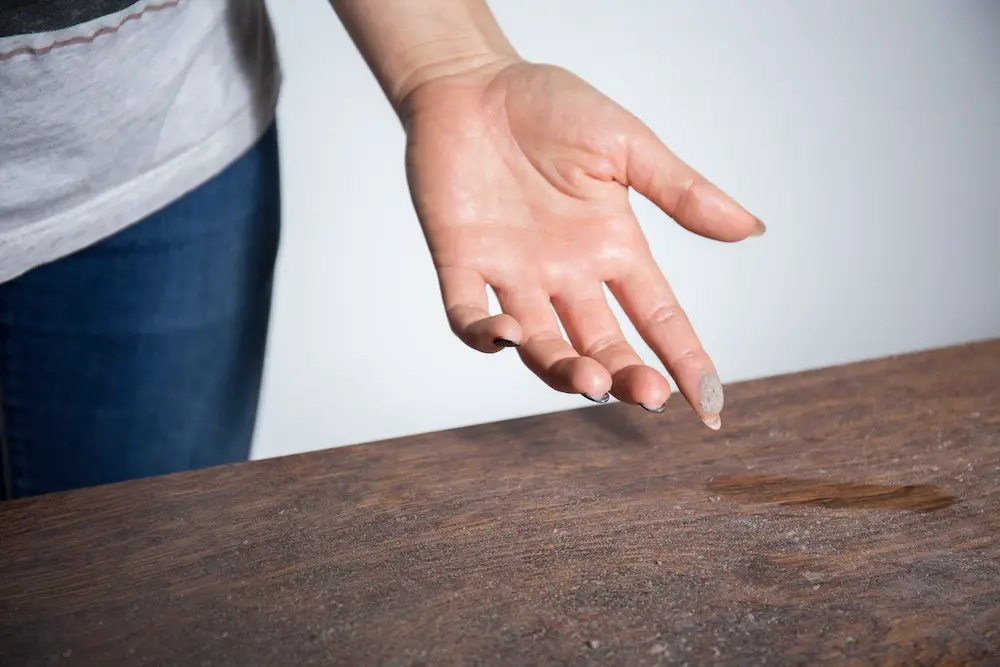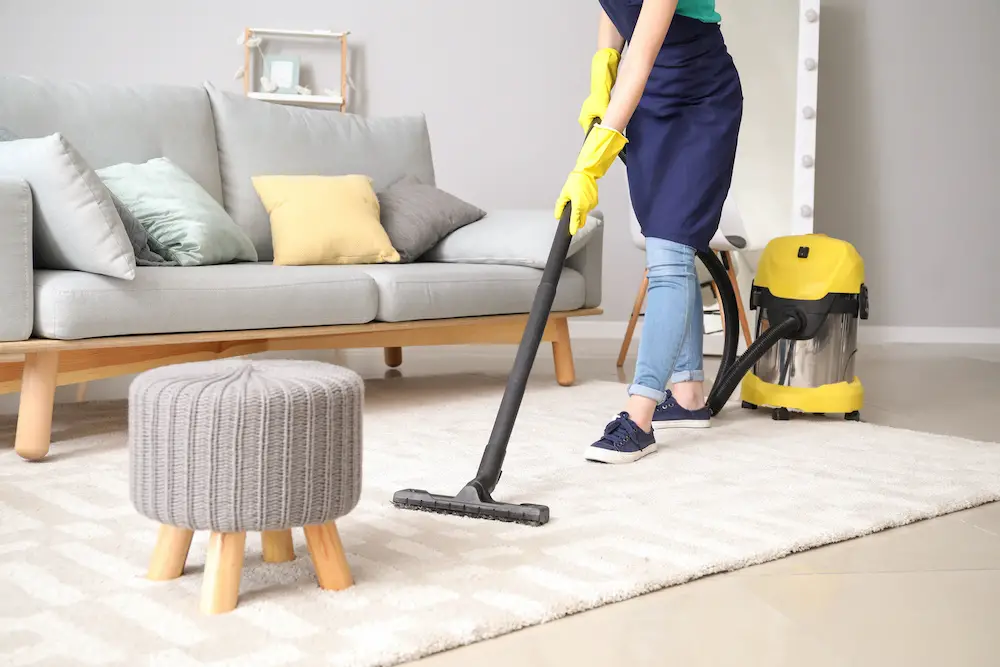Keeping your stuff neat and tidy is easy enough; the real culprit is dust. But how to remove dust from the air?
A clean and organized home contributes to a calm and peaceful mind.
Yet, to achieve one, you’d need to put in the effort to clean every nook and cranny and keep it that way.
Wondering where all the dust that has settled on your surfaces comes from?
While there are various sources (which we are going to determine in a bit), one thing’s for sure: Dust also floats around and mixes with the air you breathe.
To help you out, we’ll let you in on the most effective cleaning tricks and teach you how to remove dust from the air to achieve better and healthier indoor air.
Where Does Dust Come From?
Before anything else, let us first talk about the possible reasons why dust forms and accumulates on surfaces.
After all, knowing its source is the first step to getting dust under control.
University of Arizona professors Paloma Beamer and David Layton published a health article in Time magazine where they talked about this.
In a nutshell, the article states that dust is a combination of many different things, so it can be tough to determine where it comes from.
However, they did find out that 60% of the dust in homes comes from outdoor pollutants.
These can include pollen stuck to your clothes, soil from your shoes, or other particulate matter brought about by air that got inside through open doors and windows.
What about the remaining 40%? Here are the most likely sources:
You and Your Pets
One of the common misconceptions about dust at home is that the bulk of it comes from dead skin particles.
Since we now know that it’s not actually the case, that doesn’t mean that it’s not a significant contributor.
The same goes for your pet’s dead skin particles, more commonly known as pet dander.
Food
Another major contributor to dust are particles coming from food debris and dried spills.
Insects and Insect Droppings
Where there’s food, there’s bound to be insects. For this reason, dust can also contain insect body parts and fecal matter.
Your Hobby
Finally, think about the activities you do regularly.
Do you enjoy carpentry and DIY? How about creating resin projects, painting, or drawing?
All of these can contribute to the dust that you have at home.
The problem is, dust doesn’t just make our home look filthy and uncared for; it can also lead to breathing issues and other health problems.

What Happens When You Breathe in Dust?
The Centers for Disease Control and Prevention dedicates an entire chapter of their Healthy Housing Reference Manual to indoor air pollutants.
In Chapter Five, dust in the form of pollen, skin flakes, insects and insect droppings, and more can cause asthmatic responses, which can lead to wheezing, breathlessness, and coughing.
Breathing in dust may even lead to death, depending on the severity of the person’s asthma or allergic attack.
This is where an air purifier comes in handy.
Do Air Purifiers Get Rid of Dust?
An air purifier is an appliance made to clean any airborne contaminants to improve indoor air quality.
This is possible through the different filters built into the device. These filters can either be washed or replaced, depending on your chosen model.
So, do air purifiers get rid of dust? Yes, air purifiers can undoubtedly remove dust, but not all of them do it well.
The machine is designed to filter air contaminants. Though, you will still fare better in getting rid of surface or floor dust by vacuuming it.
The good news is that as the dust levels in the air decrease, so will surface and floor dust. This means less need for cleaning and better indoor air quality.
Keeping your air purifier constantly operating will further improve dust clearing.
How to Remove Dust From Air
Now that you know where all that dust could possibly be coming from, as well as the device that can help, it’s time to start cleaning.
How to Use an Air Purifier
Here’s a quick step-by-step guide on air purifier dust removal:
Step 1: Read the manual.
It is always advised that you read the user’s guide first before plugging in the air purifier.
This will tell you the range of your air purifier, whether or not a filter is already installed, and how to wash or replace those filters when needed.
Step 2: Clean your room first.
The next thing you need to do is give your room a quick dusting or vacuuming.
This will reduce any particles that will otherwise clog your new air purifier easily.
Step 3: Close all windows and doors.
After doing that, make sure all doors and windows are closed shut.
Better yet, check whether or not your room has any leaks that may allow purified air to escape.
Step 4: Choose the best location.
Next, pick a location where you will set up the machine.
It has to be placed in a spot with adequate ventilation all around.
It is also recommended to point the flow towards an intended spot.
For instance, you might want to direct fresh purified air towards your baby’s crib or your office desk.
How Do You Get Dust Out of the Air Without an Air Purifier?
Not everyone has an air purifier handy. Hence, we will also share some tips on how to get rid of dust in the air without one.
Determine Focus Locations
The first thing that you need to do is to determine the places where dust tends to gather.
Treat these as focus locations when cleaning your home:
Windows
It doesn’t matter what type of window treatment you have—blinds, curtains, or even just a bare window—you will still get dust.
Windows are simply magnets for dust and are where it tends to collect.
While curtains can be easily taken down and replaced or washed, blinds can prove to be a challenge due to the dust that collects in between each slat.
Electronics
We use them every day, yet dust still finds its way in and gathers in front of and behind screens and other components.
What’s even more inconvenient is the dust that finds its way inside can cause overheating and device malfunction.
Don’t forget to unplug your device before cleaning it, especially if you intend to take it apart to be dusted.
Each device also has its recommended cleaning tools indicated in each of its user manuals.
Fans
Dust tends to get airborne. That’s simply how they get around the house.
This air circulates with the help of fans, which is why they are the most to get dust exposure and coverage.
Light Fixtures
As they say, what comes up must come down. So as dust circulates in the air, it is bound to settle on any available surface.
Since most light fixtures are located in the ceiling, they’re also on the frontlines for getting dust exposure.
Upholstered Furniture
Most of the dust that collects on furniture comes from us and our pets.
These include a combination of dead skin particles, hair, and even food particles from the snacks we enjoy while watching TV.
Carpeting
Meanwhile, carpets and rugs get their dust mostly from the outdoor contaminants that get tracked in with our footwear.
Pillows
Lastly, don’t forget your sleeping area. Beds are wide open surfaces, ready to receive layers of dust at any time of day.
The focus location, though, is not the bed itself but the pillows.
This is because the hair also collects dust and contaminants that can easily cling and transfer to pillows.

How To Remove Dust From Air Without a Purifier
Now that you know what the focus locations are, here are the steps on how to get dust out of the air without an air purifier:
Step1: Wear A mask
Wearing a face mask when cleaning is very important, especially if you believe you will be exposed to too much dust and other harmful particles.
Step 2: Vacuum Initially
Decrease dust before the actual cleaning session by vacuuming everything beforehand.
Doing this removes surface dust and dislodges any contaminants that may have gotten stuck or stained onto the surface through time.
Make sure to use the proper attachments for each surface to yield the best results.
Compared to other cleaning methods, vacuuming remains to be one of the most efficient ways on how to get rid of dust in the air.
Step 3: Use a Damp Cloth When Dusting
Using a duster to remove dust might look effective, but all it does is release dust back into the air.
Instead of a feather duster, we recommend using a wet cloth with the right cleaning solution.
This helps trap dust in moisture and get rid of them more efficiently.
Step 4: Clean Strategically
Start from top to bottom to prevent dust from settling on top of surfaces you have already cleaned.
Keeping your windows open will also help circulate air and get airborne dust outside while getting fresh air in.
Step 5 Change your Bedding Regularly
Beds tend to collect a lot of dust due to its wide surface and constant exposure to our clothes, hair, and even pets.
As such, it is recommended to change beddings as least every week to minimize dust exposure, especially while sleeping.
Step 6: Change or Wash the curtains
You can always vacuum them, but it would be better to replace or wash dusty curtains instead.
Make sure your curtains are stored in a clean and dust-free space to avoid hanging fresh yet equally dusty pieces.
Step 7: Clean the carpets.
Vacuum your carpet weekly to prevent multiple layers of dust and dirt from collecting and staining.
We recommend hiring professional carpet cleaners every 6 months to give it a more thorough clean.
Step 8: Use covers.
Finally, cover up any surface that you don’t expect to use in the following months, including any furniture, appliance, or surface.
You’ll be able to keep them dust-free in this way.
Then, when the time comes that you need to use it, take off the covers carefully so as not to disturb the collected dust.
More Tips on How to Minimize Indoor Dust
Here are more tips to minimize indoor dust (and future cleaning efforts):
Don’t wear shoes indoors.
Lessen the dust that gets tracked indoors by having dedicated footwear to wear indoors.
Keep your pets well-groomed.
If you’re a pet owner, there will always be the presence of animal dander in your home.
One trick to decrease it significantly is by keeping your pet well-groomed at all times.
Give them a proper bath after every outdoor adventure to avoid tracking mud (and, consequently, dust) inside.
Declutter
The fewer things you have, the fewer the surfaces dust will settle on.
Keeping objects organized in covered storage bins will keep everything dust-free, too.
We understand the aesthetic charm of open shelving, but it doesn’t change the fact that they are more challenging to clean and maintain.
Do your hobbies in designated places.
This will keep any related dust and contaminants isolated in a specific area of your home.
We also recommend wearing the right personal protective gear for your task and keeping your hobby room well-ventilated.
This is especially true for hobbies like carpentry, resin art making, painting, and other pursuits that expose you to fine particles and chemical solutions.
It is usually impossible to keep these activities dust-free, even if you already know how to get dust out of the air.
So, the least you can do is protect yourself with the right safety gear and keep it away from family members who don’t have them on.
How Do You Get Rid of Dust Particles in a Room
The presence of dust is something we need to deal with constantly, no matter how hard we keep our homes clean and tidy.
It’s just natural to find these particles anywhere, both outdoors and indoors.
Fortunately, there are proven methods on how to remove dust from air. And the easiest way to do so is to get an air purifier.
An air purifier is a device that constantly sifts through indoor air to collect any particles and contaminants that may be present.
Air purifier dust removal is not enough, though.
Vacuuming and cleaning are still necessary to deal with dust particles that have settled down on surfaces.
Those who don’t have an air purifier can clear dust with regular cleaning tools.
Just make sure to use moisture to prevent any dust from becoming airborne again.
Finally, there are other ways to minimize dust from collecting, such as keeping your pets well-groomed and avoiding wearing outdoor footwear at home.

